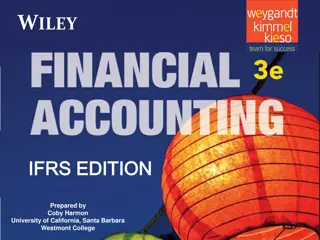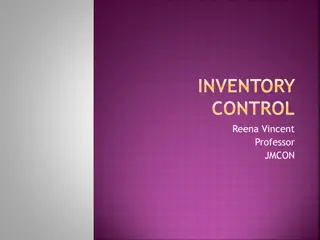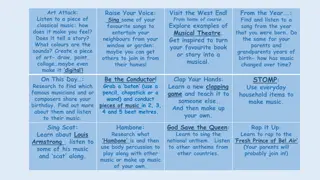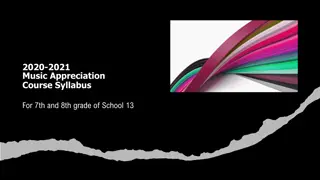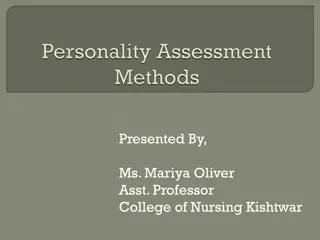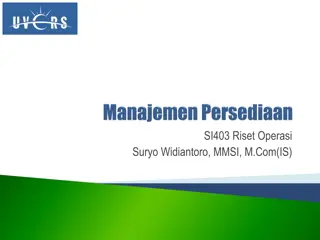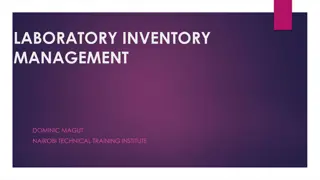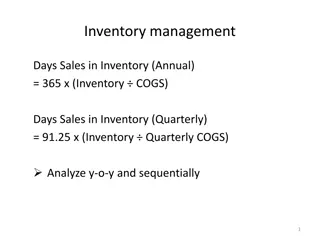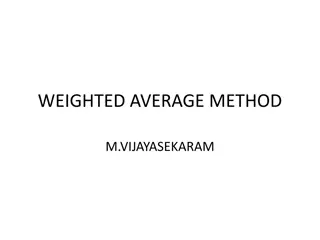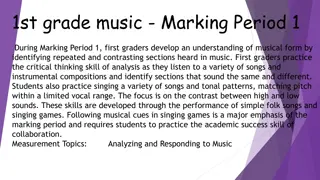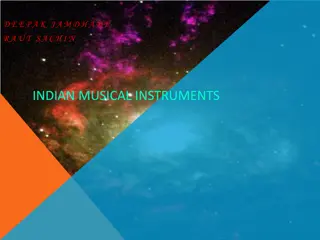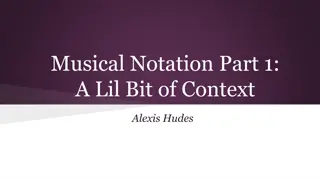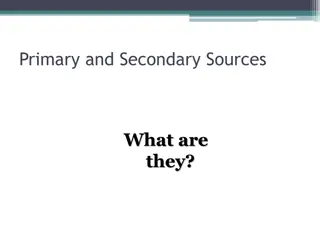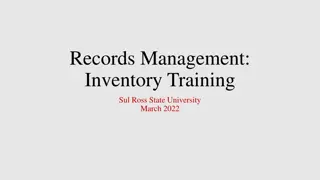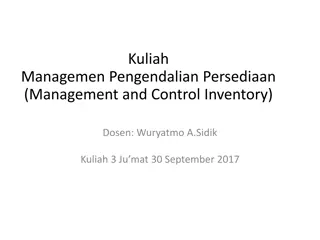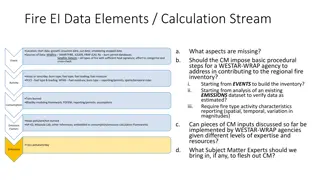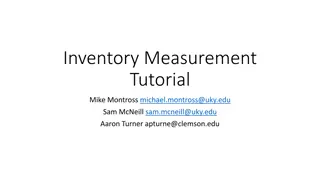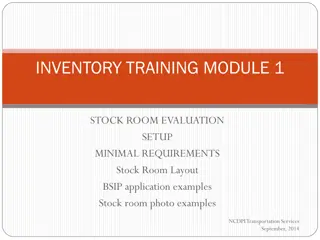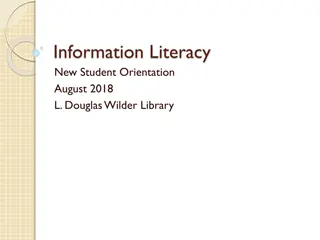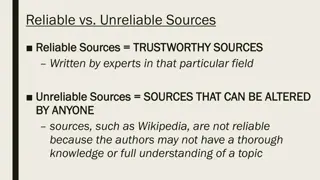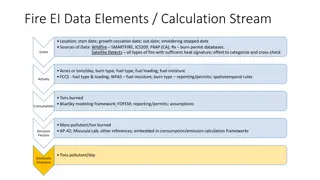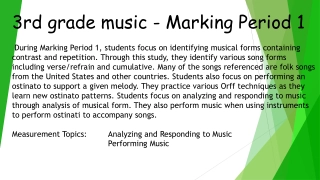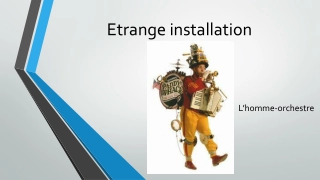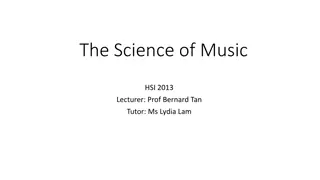International Inventory of Musical Sources by RISM
Founded in Paris in 1952, the Répertoire International des Sources Musicales (RISM) comprehensively documents existing music sources worldwide. Recognized as the key entity for cataloging music sources globally, RISM's working groups in over 35 countries catalog manuscripts, printed music, writings, and libretti stored in various collections. The cataloged results are edited and published by the RISM Central Editorial Office in Frankfurt. RISM publications are categorized into Series A (by composer), Series B (by topic), and Series C (index).
Download Presentation

Please find below an Image/Link to download the presentation.
The content on the website is provided AS IS for your information and personal use only. It may not be sold, licensed, or shared on other websites without obtaining consent from the author. Download presentation by click this link. If you encounter any issues during the download, it is possible that the publisher has removed the file from their server.
E N D
Presentation Transcript
1 : 22 2017
Rpertoire International des Sources Musicales (RISM) International Inventory of Musical Sources Internationales Quellenlexikon der Musik Founded in Paris, 1952 comprehensively documenting extant sources of music all over the world It is the largest organization of its kind and the only entity operating globally to document written musical sources RISM establishes what exists and where it is kept RISM is recognized among experts as the key place for documenting music sources all over the world The musical sources recorded are manuscripts or printed music, writings about music and libretti They are stored in libraries, archive, monasteries, and private collections , , . . ./ . . .
, , . . ./ . . .
RISM working groups in more than 35 countries take part in the project Around 100 individuals from those working groups catalogue the musical sources preserved in their countries They pass their results on to the RISM Zentralredaktion (Central Editorial Office) in Frankfurt, where the entries are edited and published RISM working groups are currently active in the following countries and cities: Australia Adelaide, Austria Innsbruck, Salzburg and Vienna, Belarus: Minsk, Belgium: Brussels and Louvain, Brazil: Bahia, Bras lia, Campinas, Rio de Janeiro and S o Paulo, Canada: London (Ontario, )China: Beijing and Shanghai, Croatia: Zagreb, Czech Republic: Prague, Denmark: Copenhagen, Estonia: Tallinn, Finland: bo/Turku, France: Paris, Germany: Dresden and Munich, Greece: Thessaloniki, Hong Kong: Hong Kong, Hungary: Budapest, Ireland: Waterford, Italy: Milan and Rome, Japan: Tokyo, Latvia: Riga, Lituania: Vilnius, Netherlands: The Hague, Norway: Trondheim, Poland: Gdansk, Lublin, Warsaw, Wroc aw, Portugal: Lisbon, Romania: Bucharest, Russia: Moscow and St Petersburg, Slovakia: Bratislava, Slovenia: Ljubljana, Spain: Barcelona, South Korea: Seoul, Sweden: Stockholm, Switzerland: Bern, Taiwan: Taipei, Ukraine: Kiev and Lviv, United Kingdom: London, United States: Cambridge (Massachusetts, )Turkey: Istanbul , , . . ./ . . .
RISM publications are divided into the following series: -Series A: arranged by composer -Series B: arranged by topic -Series C: index of Music Libraries In addition to these, working groups conduct projects to document libretti surviving in their respective countries , , . . ./ . . .
RISM Series A/I Printed Music RISM Series A/I Individual Prints before 1800 documents printed music of works by a single composer published between 1500 and 1800. Collected prints (anthologies of works by various composers) are published in RISM series B. RISM Series A/II Music Manuscripts RISM series A/II Music Manuscripts after 1600 lists only handwritten music. They are described in detail according to a uniform scheme containing more than 100 fields. There are currently more than 917,000 entries on pieces by around 28,000 composers available ( 2017, ). The total number of music manuscripts worldwide is many times that large. , , . . ./ . . .
, , . . ./ . . .
RISM Series B RISM series B comprises a systematic series which documents a self-contained group of sources. The volumes in series B are published by G. Henle of Munich. In addition, the portion of B/I covering the years 1500-1550 is available in the online catalog.[6]Series B includes: B/I and B/II: Printed collections of the 16th-18th centuries B/III: The theory of music from the Carolingian Era up to c.1500 B/IV: Manuscripts of polyphonic music, 11-16 centuries B/V: Manuscripts of tropes and sequences B/VI: Printed writings about music B/VII: Manuscripts of lute and guitar tablatures B/VIII: German hymns (DKL) B/IX: Hebrew sources B/X: The theory of music in Arabic writings, c. 900 1900 B/XI: Ancient Greek music theory B/XII: Persian music theory B/XIII: Hymnologica Slavica (Slavic hymns) B/XIV: Manuscripts of the processional B/XV: Polyphonic music in Ibero-American sources B/XVI: Palm-leaf manuscripts B/XVII: Trio Sonatas , , . . ./ . . .
RISM Series C Directory of Music Research Libraries, RISM series C lists in five volumes all the music libraries, archives, and private collections which house historical musical materials. This index of music libraries is produced in cooperation with the Publication Committee of the International Association of Music Libraries (IAML). This series was based on Rita Benton, ed., Directory of Music Research Libraries (Iowa City: The University of Iowa, 1967-1975) The Access to Music Archives Project Group (IAML/AMA) and RISM, will update the directory of research libraries and institutions with primary musical sources. , , . . ./ . . .
, , . . ./ . . .
Muscat is here! RISM's central cataloging program for musical sources (manuscripts, printed music, libretti, and treatises) , , . . ./ . . .
, , . . ./ . . .
, , . . ./ . . .
1. Siglum 2. Official name. This will be the Greek name (the name in both the Greek alphabet and a transliteration in the Latin alphabet) 3. Official translated name (If there is one, or a translation if possible if there's not an official version). 4. Complete address 5. Website and/or e-mail 6. Telephone, fax 7. A contact person if there's no website or other way of contacting 8. History of the institution 9. Information on the collection policy 10. Relevant literature 11. List of musical holdings and/or archival collections 12. Link to online finding aids 13. Link to online repository 14. Special conditions for use of the materials 15. Reproduction services , , . . ./ . . .
http://www.rism.info/en/ https://opac.rism.info/metaopac/start.do?View=rism&Language=en http://www.adwmainz.de/startseite.html Rita Benton, "R pertoire International des Sources Musicales," The New Grove Dictionary of Music and Musicians, 2nd edition, 2002, vol. 21, p. 194 "Printed Music (A/I and B/I) now in RISM's Online Catalog," http://www.rism.info/en/home/newsdetails/browse/3/article/64/printe d-music-ai-and-bi-now-in-risms-online-catalog.html 2016-RISM http://www.rism.info/en/publications/annual-reports/2016.html , , . . ./ . . .



